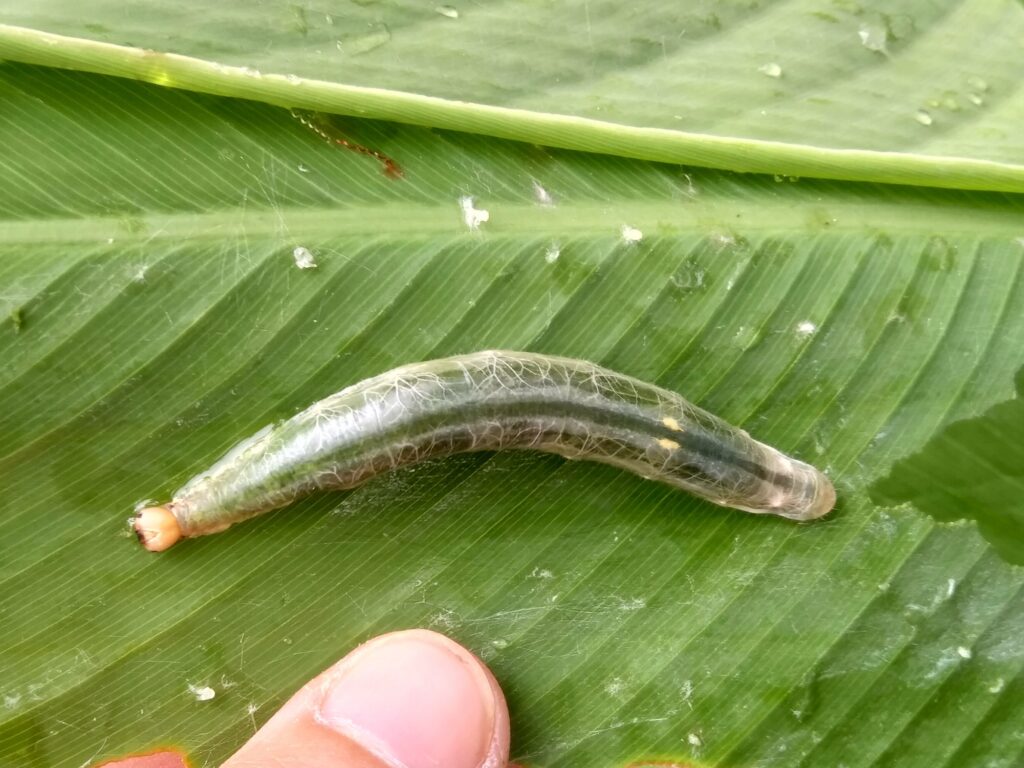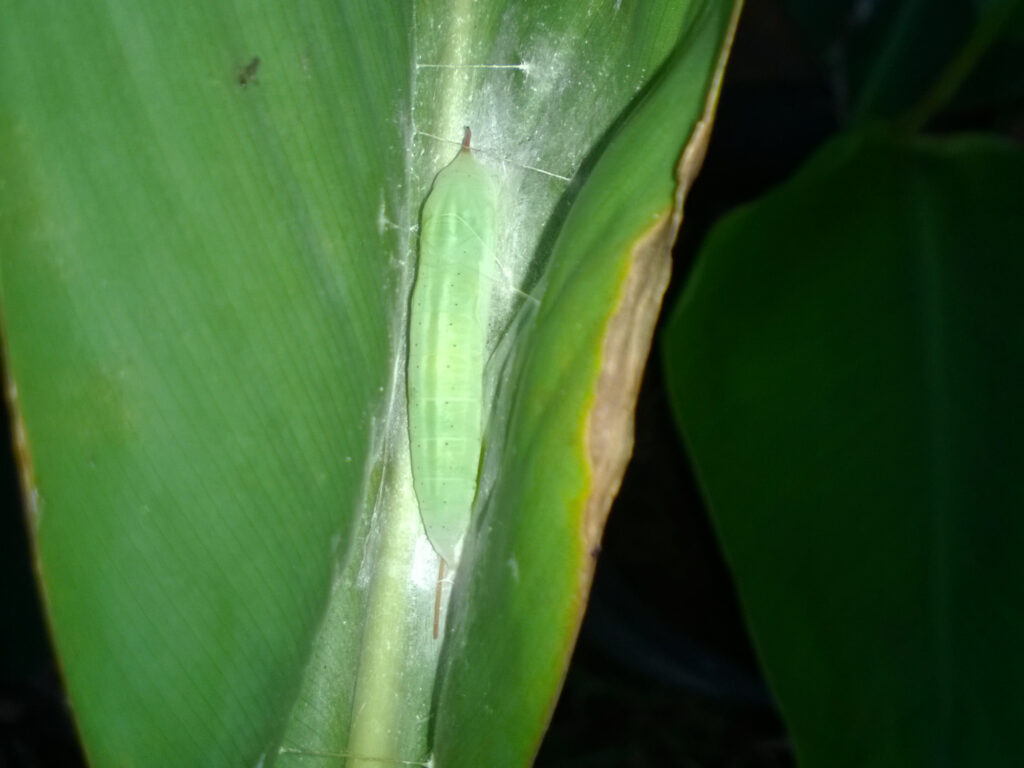




This week for Flora and Fauna Friday, we have a tropical butterfly with a transparent caterpillar, the Brazilian Skipper (Calpodes ethlius).
The Brazilian Skipper is large for a skipper, at about an inch-and-a-half in length with an elongated forewing. The underside of their wings is a golden-brown with four white cells, the technical term for spots, in a diagonal line towards the outer edge of their hindwing. From above, their wings are a dark brown towards the center with a half-dozen or so large, blocky white cells. Their eye is surrounded with a prominent white eye-ring. Overall a drab butterfly that’s a bit overgrown and with some anatomical quirks. Being a large skipper, Brazilian Skippers are strong and fast fliers, zipping around between flowers and perches. Their large size and an extra-long proboscis allows this butterfly to easily sip nectar from larger flowers, those usually reserved for acrobatic hummingbirds and spelunking bumblebees. Brazilian Skippers are mainly crepuscular, flying at dawn and dusk, and so are scarcely seen during the day. They’re most easily found in close proximity to their host plants or as caterpillars.
Brazilian Skipper caterpillars host on two genera of plants, Canna and Thalia. Here in the Lowcountry, we have two native host plants for the Brazilian Skipper, Golden Canna (Canna flaccida) and Powdery Alligator-Flag (Thalia dealbata). Both are rare with few natural populations in South Carolina. However, they are also both popular and hardy aquatic plants commonly sold by plant nurseries, alongside the even more popular and widespread Canna Lily (Canna indica) from South America. All three species are natural host plants for the Brazilian Skipper, which is adept at eating them! The Brazilian Skipper actually goes by another name in the nursery trade. Its infamous alter ego is the “Larger Canna Leafroller” and they can do some damage, albeit superficial damage, to their ornamental host plants, which has evoked the ire of horticulturalists. Brazilian Skipper caterpillars feed using the leaf-rolling technique. Young caterpillars will cut two slits in the edge of a leaf, then fold it over on top of themselves self like a little caterpillar taco, attaching the folded leaf in place with silk. There the caterpillar is safe from the elements and will poke its head out to chew on the edge of its roof. When it eats itself out of house and home, it will move to a new spot on the leaf to tuck itself into a bigger bed and breakfast. These caterpillars are also very unique in appearance. They have a khaki colored head, transparent skin, and green innards spider-webbed with white tracheal tubes, this insect equivalent of lungs being visible through their see-through skin. Eventually this caterpillar will grow to a chunky three inches in length. At that point, it will move to a new leaf and fold it in half. In this final cozy abode it will pupate into a powdery, pale green chrysalis and eventually emerge a fully formed butterfly.